Take a walk on the wild(life) side on these Southern tours
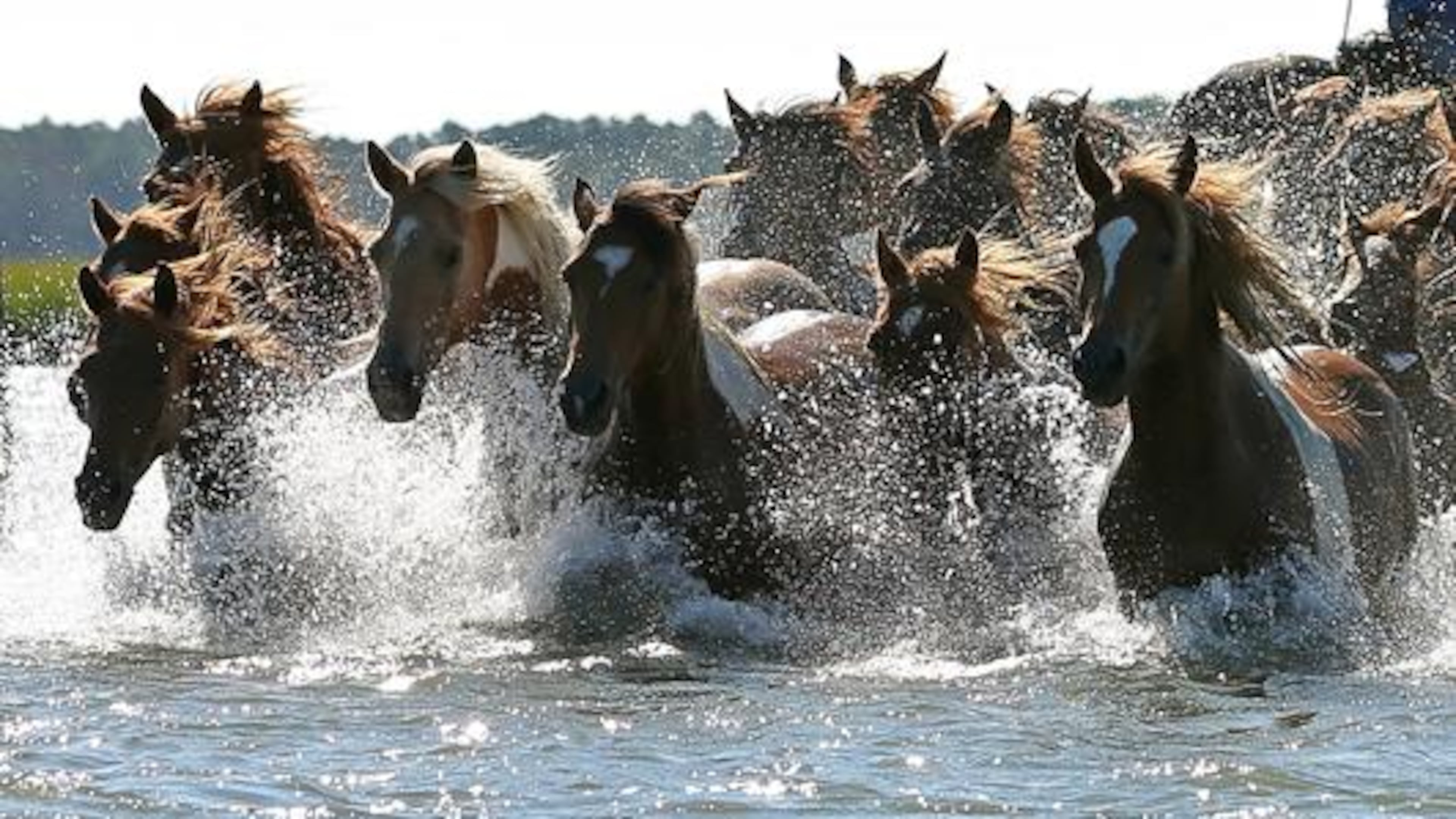
The South is teeming with wildlife on land, sea and swamp. To observe ponies, gators, elk and dolphin in their natural habitats, here are a handful of scenic destinations and guided tours ripe for viewing opportunities.
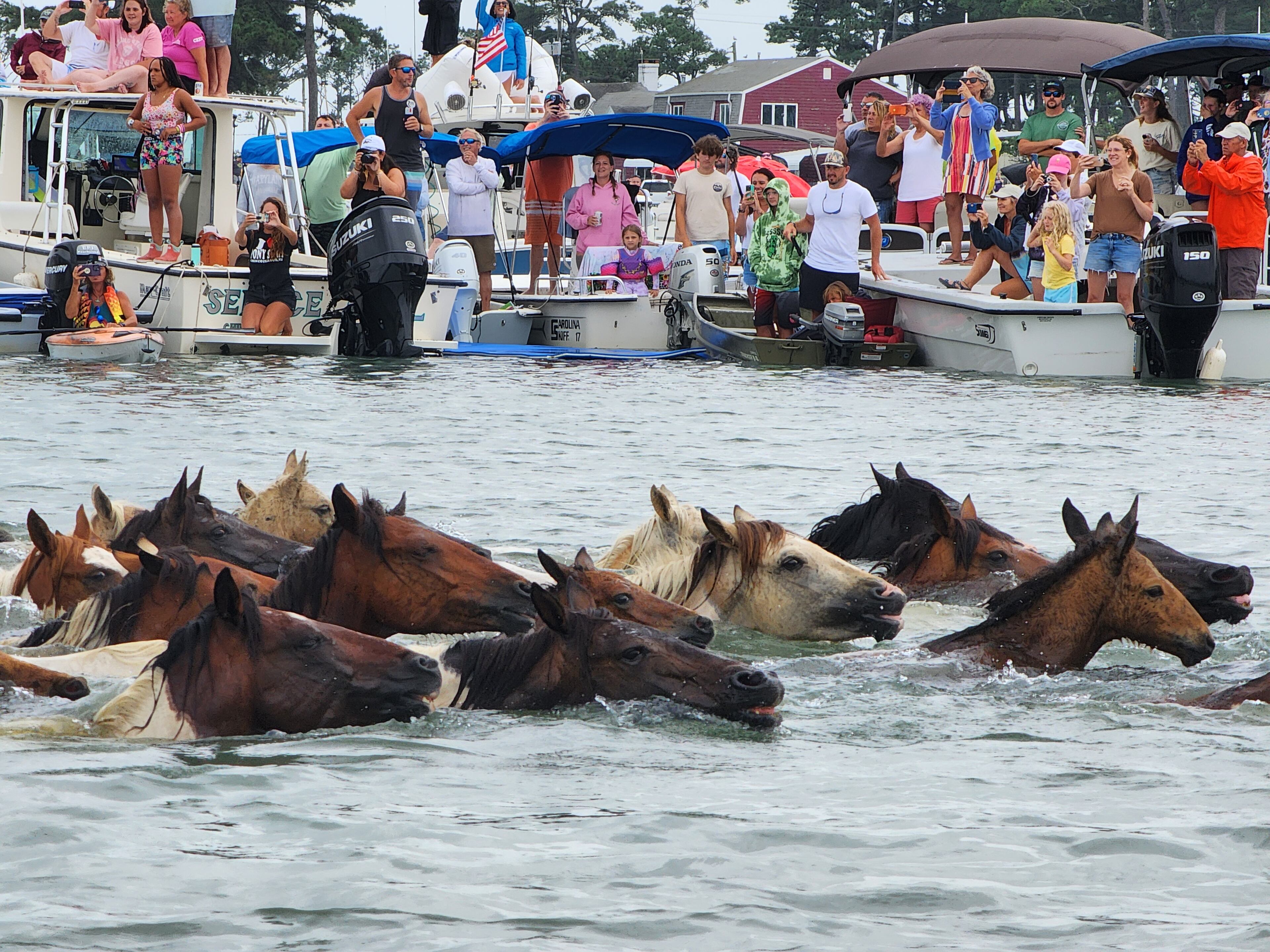
Chincoteague Island Pony Swim
When the Chincoteague Volunteer Fire Company held a fundraising pony swim in the summer of 1925, it’s unlikely the organizers thought it would be going strong a century later. July 30 marks the 100th anniversary of what started as a quaint local tradition – herding wild ponies across the narrow channel that connects Assateague Island, a pristine slice of nature operated as a national park, to Chincoteague Island, home to a tranquil seaside community off Virginia’s Eastern Shore. The equine spectacle was immortalized by Marguerite Henry’s 1947 children’s book, “Misty of Chincoteague,” and the 1961 movie, “Misty.” Today, thousands of spectators come to see “saltwater cowboys” round up the herd and to cheer on the ponies as they make the six-minute swim. The best seat in the house is on a kayak, and those rent out fast.
If you want to take home one of the majestic creatures, attend the 100th annual Pony Auction at the carnival grounds July 31. The auction helps control the population and raises funds for the fire department.
Free. July 30. Chincoteague Chamber of Commerce & Visitor Center, 6733 Maddox Blvd., Chincoteague Island, Virginia. 757-336-6161, chincoteaguechamber.com
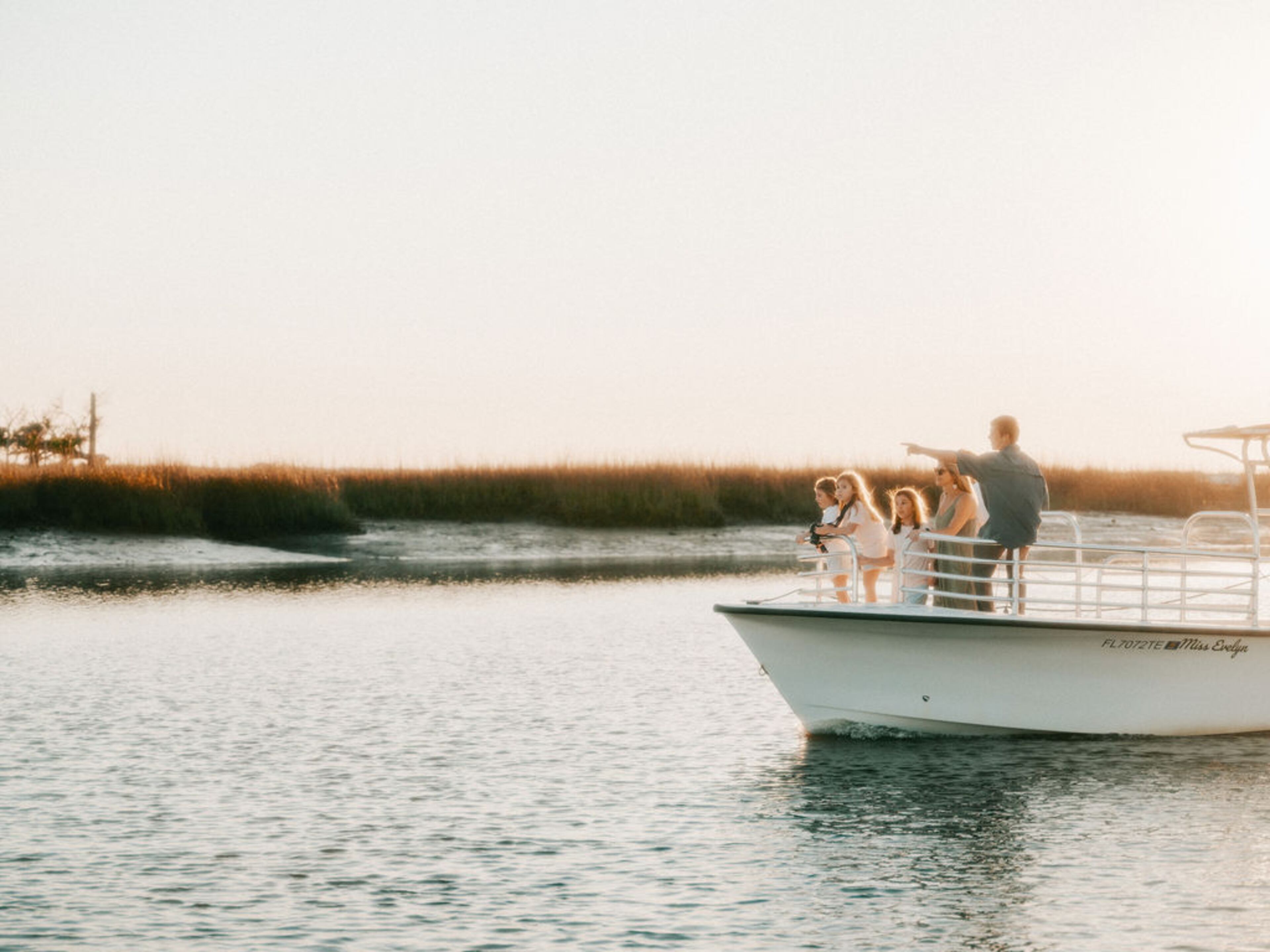
Amelia Island Dolphin Research Tour
In Florida, dolphin tours are almost as common as the creatures themselves, but the new Dolphin Research Tour that departs from Amelia Island goes beyond just observing the playful creatures as they frolic in the waves of Cumberland Sound. Participants become citizen-scientists who help marine biologist Nick Williams collect data for his research on strand feeding. It’s a rare phenomenon where Atlantic bottlenose dolphins work together to corral small fish onto mudflats or sandbars, temporarily beaching themselves while they feast. This behavior is unique to the Lowcountry marshes and tributaries that stretch along the South Carolina and Georgia coasts. Amelia Island is the southernmost point of the region.
Williams studies dolphin “language” to determine if there is a specific call that initiates strand feeding. Participants help photograph dolphins — Williams can distinguish them by their unique dorsal fin markings — and record their vocalizations with a hydrophone.
The 2.5-hour tour is offered through Ritz-Carlton Amelia Island and is available to the public, not just hotel guests. The collaboration between scientist and luxury hotel chain is a win-win. Williams gets his research funded and the hotel has a tour unlike any other in the world.
Williams admits not all the data collected by his citizen-scientists is usable, but he loves seeing the joy on kids’ faces when they make a discovery.
If they happen to spot a wild horse on Cumberland Island while searching for dolphins, that’s a bonus.
$350 per person. The Ritz-Carlton, Amelia Island, 4750 Amelia Island Parkway, Amelia Island, Florida. 904-277-1100, ameliaisland.com
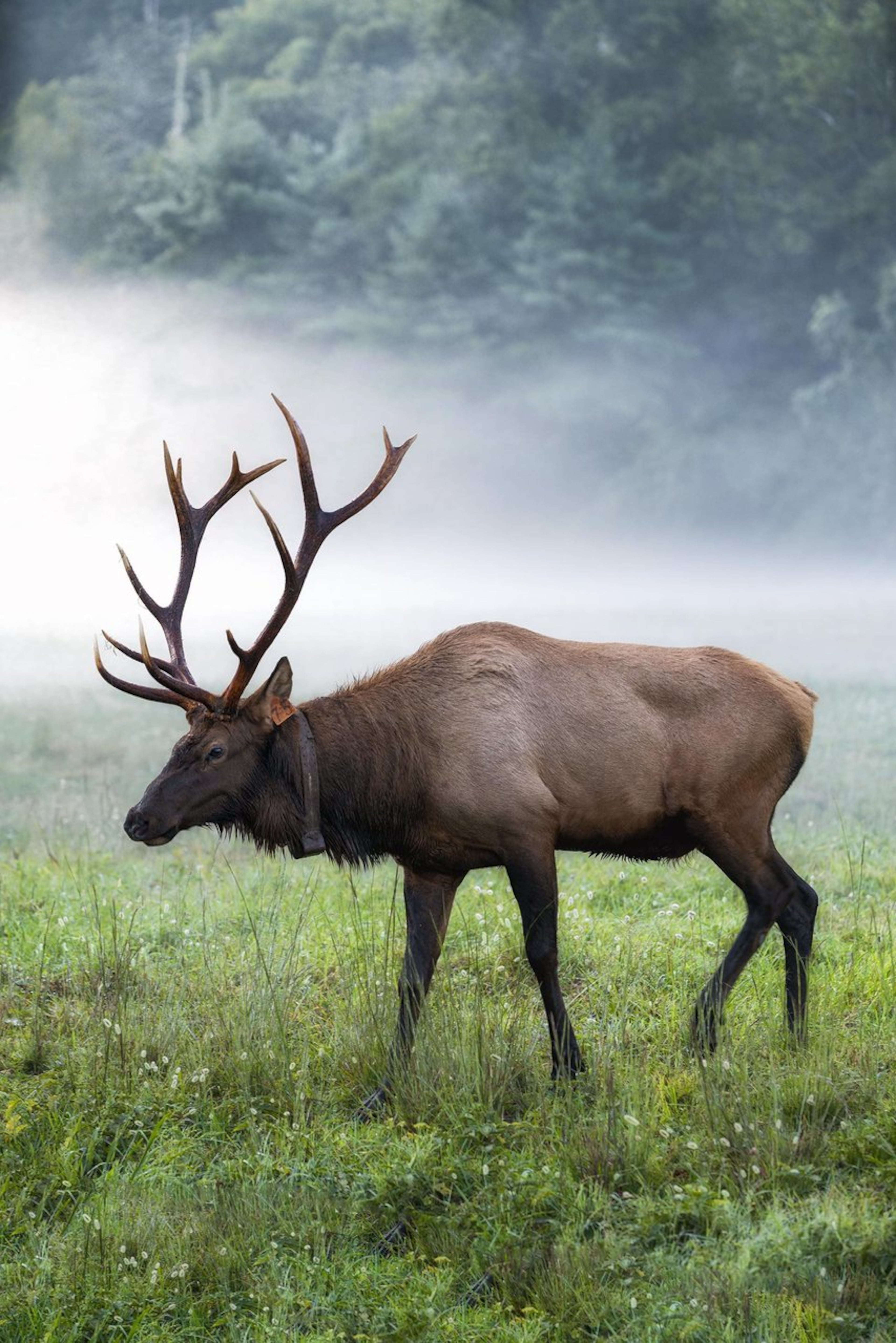
Elk Viewing in Cataloochee Valley
Black bears are the unofficial mascot of the Great Smoky Mountains National Park that sprawls across Tennessee and North Carolina, but the most visited national park in the country is home to an equally fascinating but less familiar creature — the elk. They roam in the lush meadows of Cataloochee Valley on the North Carolina side, one of the most remote parts of the park. This corner of Haywood County was closed for months because of severe damage from Hurricane Helene last September, but much of it reopened in April.
Wildlife enthusiasts are driving or hiking here once more, hoping to observe the mammoth animals that weigh between 700 and 1,100 pounds.
Because of overhunting and habitat loss, elk disappeared from North Carolina in the 1700s. In keeping with the National Park Service mission to recover at-risk species, they were reintroduced in 2001.
During the fall mating season, the elk put on a spectacular show. Bulls lock antlers in fierce competition for territory and harems, and the mountains echo with their high-pitched mating call called bugling.
Park ranger and wildlife biologist Joseph Yarkovich has had many elk encounters over the years.
“One that stands out is watching a cow elk give birth and seeing the process of her cleaning and imprinting with the calf,” Yarkovich said. “It’s been great to watch the herd grow and see the future of the elk in North Carolina.”
Elk are typically spotted at dawn and dusk. Be sure to stop by the Haywood County Visitor Center to pick up a free guide to viewing elk. And bring binoculars. Elk can be aggressive toward humans and should only be viewed from a distance. It’s illegal to come within 50 yards of an elk in the park.
Haywood County Visitor Center, 91 N. Lakeshore Drive, Suite 2, Lake Junaluska, North Carolina. 828-944-0761, visithaywood.com
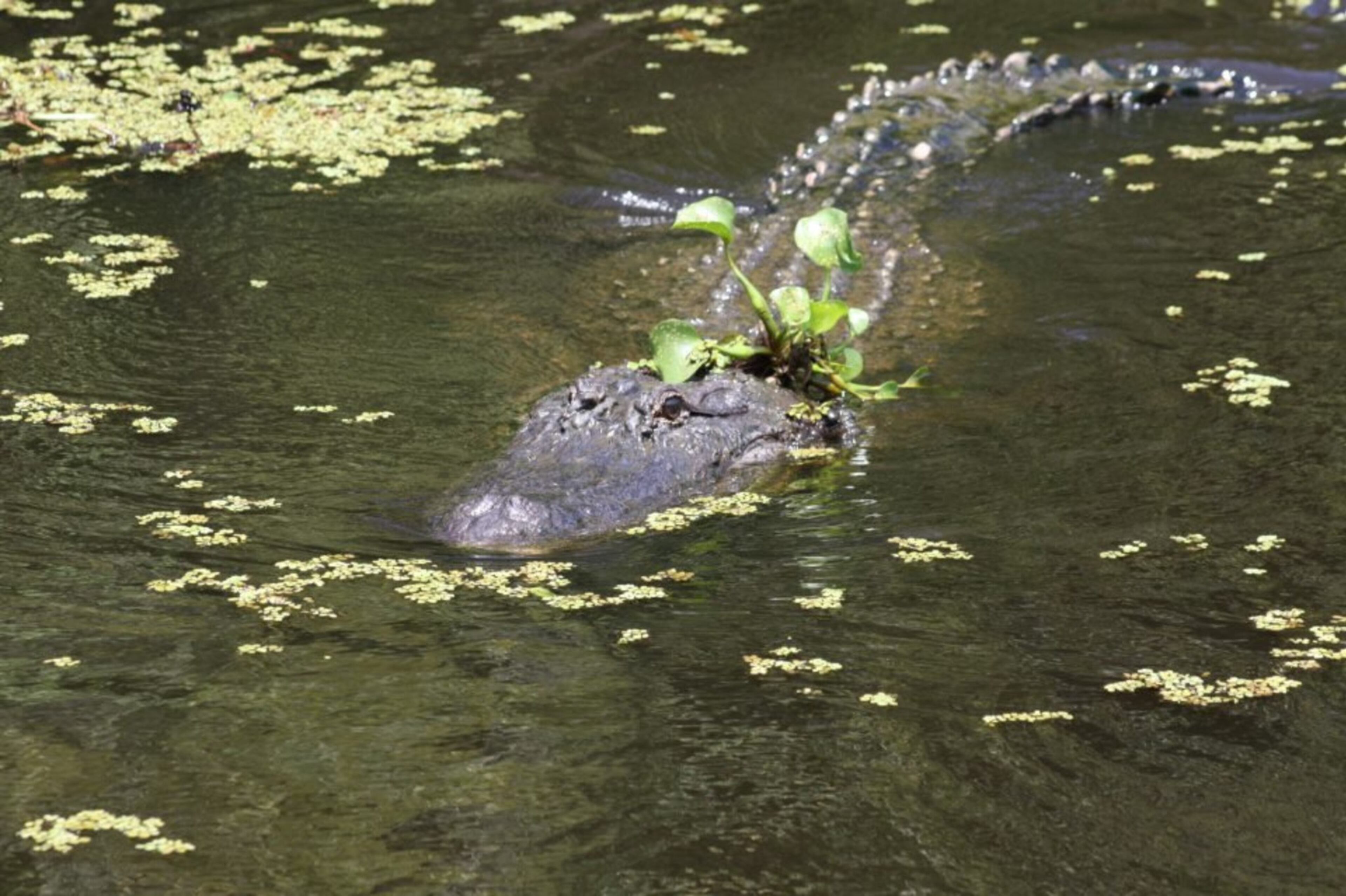
Cajun Pride Swamp Tours
A pontoon boat on Manchac Swamp inches closer and closer to the bank so passengers can get a good look at one-eyed Jack. No, he’s not a pirate but just as formidable. The alligator’s massive, armored body sprawls in a clearing in the dense vegetation, his knifelike upper teeth gleaming in the sun. An alligator’s upper jaw is wider than its lower jaw, so only the upper teeth are visible when its mouth is closed.
Nobody knows for sure how Jack was injured, but he likely met his match fighting another male (bull) during the spring mating season. From April to June, males become fiercely territorial, driving out the competition for females.
That’s just one thing visitors learn on Cajun Pride Swamp Tours, a narrated, 90-minute tour of a private wildlife refuge 25 miles northwest of New Orleans.
It’s an eerily beautiful place where curtains of Spanish moss cling to the cypress tress like cobwebs. Gators are the main attraction, but there’s much more to see.
The bayou hums with a perpetual chorus of haunting calls and high-pitched whistles from hundreds of species of birds and insects.
It’s a breeding ground for many migratory birds, such as the bright yellow hooded warbler that’s easily spotted in the verdant foliage, and the blue grosbeak that sings from thickets near the shore.
Great egrets, snow-white birds that stand over 3 feet tall, are year-round residents. They use their sharp, pointed beaks to spear fish and frogs.
While visitors are observing wildlife, they are likely to pick up tidbits about Cajun culture and traditions from the captain.
“Louisiana’s swamps are more than just scenic landscapes,” company owner Lori Bair said. “They are vibrant ecosystems full of life, history and mystery.”
$16-$32. Cajun Pride Swamp Tours, 110 Frenier Road, LaPlace, Louisiana. 504-467-0758, cajunprideswamptours.com


